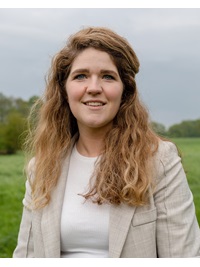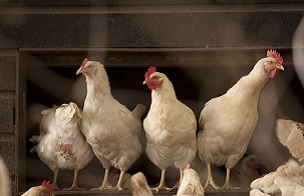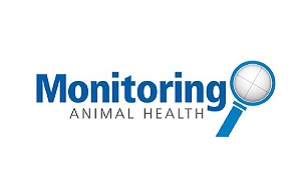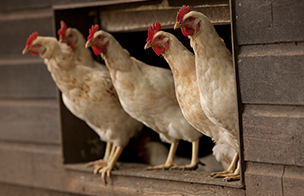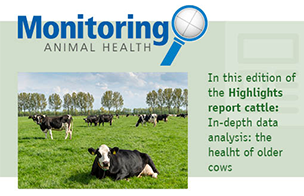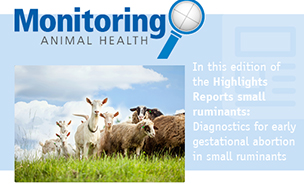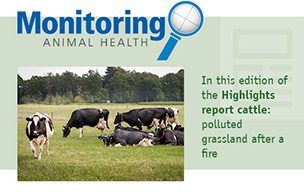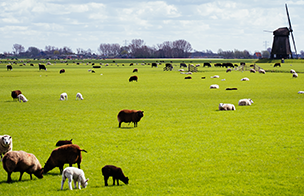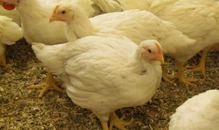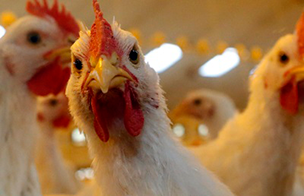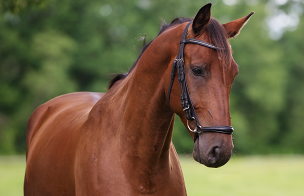
Royal GD carries out monitoring programmes for various animal diseases, including brucellosis, Q fever, bluetongue and avian influenza. In addition, GD has contributed to the establishment of Animal Health Surveillance System (AHSS) in 2002.The national AHSS is an accessible and voluntary system, providing a broad safety net for the earliest possible detection of animal health signals. Such signals originate from farmers in various livestock sectors (cattle, pigs, poultry, sheep, goats and horses), veterinarians, the processing industry, research institutes and public health authorities. The AHSS researches, bundles and analyses these signals derived from a number of complementary instruments. The results are shared with farmers, veterinarians and relevant parties such as the government, livestock sector, public health organisations and (if necessary) neighbouring countries who may need to take action. In the Netherlands, GD is commissioned to monitor animal health by the Dutch Ministry of Agriculture, Nature and Food Quality, the Producer organisations and interbranch organisations of the livestock industry.
European rules for the prevention and control of animal diseases are laid down in the European in the Animal Health Regulation (AHR). This Regulation stipulates that each Member State must establish a system for designated and emerging (new) animal diseases in farm animals and horses. The AHR has been in force since 2021. Since then the monitoring programmes for designated diseases and the AHSS, which are carried out by GD, are a legal statutory duty of the Dutch government. The Ministry of Agriculture, Nature and Food Food Quality (LNV) has designated GD as a legal entity with this statutory task.
Three goals
Animal health monitoring is vital for animal health and welfare, food safety and export position of the Netherlands. These interests are translated into monitor goals:
- Detection of outbreaks of recognised pathogens, which are not known to be otherwise present in the Netherlands.
- Detection of unknown diseases or pathogens.
- Description of trends and developments in animal health
How does it work

Step 1. Data collection
The AHSS gathers signals from the field, both reactively and pro actively. Reactive gathering aims to detect signals from the field in the broadest possible sense, and relies on the initiative of farmers, veterinarians and other parties who visit farms to provideus with information. In the proactive instruments, the initiative to gather information lies with GD. Information derived from these instruments provides insight into trends and new developments in animal health.
Step 2. Analysis
The ‘Veekijker’ veterinarians regularly discuss and analyse all signals and results, together with other experts, during the ‘Veekijker’ consultation.
Step 3. Interpretation
GD makes quarterly or half-yearly reports for each livestock sector, giving results and possible recommendations for further action.
Step 4. Communication
GD periodically shares the results of the monitor with government and industry, farmers and veterinarians, humane healthcare organisations and neighbouring countries. In the event of a possible (acute) risk for animals and/or human beings, GD directly contacts the government, livestock sector, humane healthcare providers and (if necessary) neighbouring countries. The government and livestock industry subsequently decide whether further action must be taken in the industry, such as extra studies, communication or adaptations in policy.
Read the latest highlights report cattle above.
Read the latest highlights report poultry above.
Read the latest highlights report pigs above.
Read the latest highlights report small ruminants above.
Monitoring animal health
Daily tens of thousands of animal owners, thousands of veterinarians and hundreds of staff relevant organisations and research institutes contribute to a common goal: healthy animals, healthy products and healthy people. See how we team up for animal health.
Information
Would you like to know more about the Animal Health Surveillance System?
Contact Lotte Roos, Businessmanager Governmental Affairs & Coordinator Animal Health Surveillance
